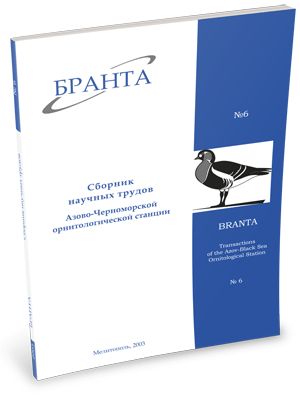
Transactions
of the Azov-Black Sea Ornithological Station



About expanding range of White-tailed Plover (Vanelfochettusia leucura) in Western Palearctic
Chernichko I.I.
The species was firstly described as Charadrius leucurus Lichtenstein, 1823, but according to certain morphological differences of this Plover from both Sociable Plover (Chettusia gregaria) and Lapwing (Vanellus vanellus) this bird can considered to be a separate gender Vanellochettusia Brandt, 1852 instead of Vanellus Brisson, 1760 (Kozlova 1961, Stepanyan,1990). However in European ornithological literature Latin name Vanellus leucurus is more common. Before 1960s the breeding range of White-tailed Plover covered only solitary parts of South Kazakhstan, Uzbekistan, Turkmenistan, Eastern Siberia, Jordan Iraq, Iran and Afghanistan. Kazakhstan settlements were the extreme northern breeding sites in the range, which extended till latitude 48 North (Kozlova, 1961; Gavrin et al., 1962; Hayman et al., 1986). After 1960s and especially after 1975 the flights of White-tailed Plover into Europe became more frequent. Basing on that fact, many authors spoke about the developing range extension (Glutz v. Blotzheim et al., 1975; Dean et al., 1977: Cramp, Simmons, 1983; Belik 1989; Tomkovich, 1992; Hagemeijer, Blair, 1997). Changes, taking place inside the White-tailed Plover range are of comparative interest because there are other Wader species, flying into Europe (Charadrius leschenaultii, Ch. asiaticus, Vanellus indicus, Hoplopteivs spinosus) and a number of their records has also increased in the end of 20th century. These facts allow presuming the existence of some general trend, analyzed by the example of White-tailed Plover.
Read the paper in a PDF file